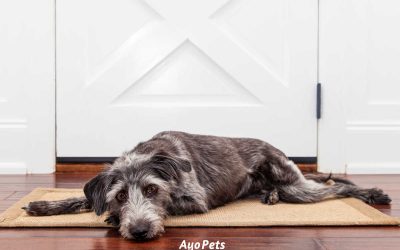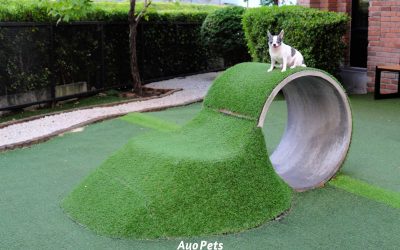Vegetables may be good for us but what about our dogs?
Dogs can safely eat most vegetables, such as broccoli, cabbage and pumpkin, but vegetables should not make up more than 25% or less of their daily diet. Feed raw vegetables to your dog if you can, otherwise bake, boil, or steam them lightly. Vegetables can also be used as healthy training treats.
Many guidelines to keep your dog safe and healthy when eating vegetables are the same as when a dog eats anything from this list of dog-friendly fruits. So let’s take a look at what’s important to know before we get to the list of vegetables:
Remove any seeds and skin, and cut vegetables into slices, small pieces, or puree the vegetables before feeding them to your dog.
Buy organic vegetables that haven’t been sprayed with pesticides or wash the vegetables well or peel them before giving them to your dog. If you have a garden, you can grow many of these vegetables from seeds or scraps.
Never add salt, herbs, spices, fats, or oils when cooking vegetables for your dog.
Many vegetables hold a lot of water. Feeding your dog vegetables contributes to your dog’s daily water intake and is one way to get your dog to drink more water.
Mix up the vegetables you feed your dog and don’t feed a lot of the same vegetable every day. Even if dogs can eat vegetables, all vegetables are best eaten in moderation and in variation (don’t feed the same vegetables every day).
Slowly introduce vegetables to your dog’s diet. If your dog gets diarrhea after eating vegetables, simply feed less vegetables.
And click here for the list of vegetables that dogs cannot eat (they’re poisonous!)
Always consult your veterinarian for advice before adding vegetables to your dog’s diet. The list below is for information purposes only. Dogs do not need to be given vegetables if they are on a balanced diet, and too many vegetables can do more harm than good, particularly if your dog has health issues such as diabetes or kidney stones.
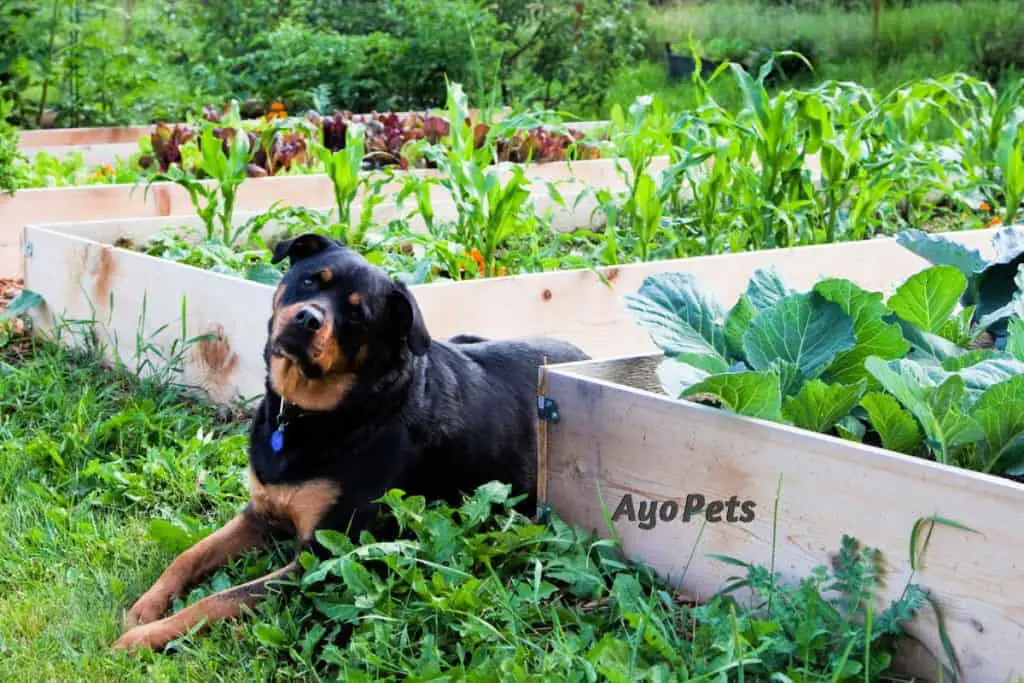
Here’s an alphabetical list of vegetables that dogs can eat in moderation, with some notes:
| VEGETABLES DOGS LOVE | NOTES ON FEEDING VEGETABLES TO DOGS |
|---|---|
| Asparagus | Dogs can eat raw asparagus if they like to chew on a hard, healthy treat. But raw asparagus may cause diarrhea, vomiting, or gas. Baking, boiling or steaming asparagus lightly minimizes this effect and is softer to eat. Cooking for too long may destroy many nutrients in this vegetable. |
| Beets | Dogs can eat beets in moderation. They’re acidic and too many beets may cause vomiting and/or diarrhea. Cut up all beets before giving them to your dog as they are a choking hazard or may get stuck in the bowel if not chewed before swallowing. Don’t give beets if your dog has bladder issues. |
| Bell Peppers / Capsicum | Dogs can safely eat green, red, orange, and yellow bell peppers in moderation. Red bell peppers have the highest nutritional value. Remove the seeds and stalk before feeding. Slice raw pepper to make a crunchy treat for your dog, or cook lightly to make it easier to digest. Never add seasoning, garlic, or onion. |
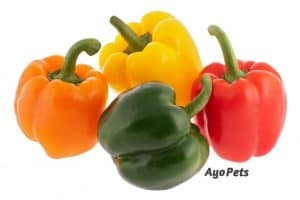
| Brussels Sprouts | Dogs can safely eat brussels sprouts in small amounts. All brussels sprouts must be sliced or chopped into small pieces to prevent choking. Steam, boil, or bake sprouts before giving them to a dog as a treat or in their food. Brussels sprouts can help with digestion and constipation, but may also cause flatulence. |
| Butternut Squash | Cooked butternut squash is a healthy treat for dogs. Don’t feed a dog raw butternut. Roast, steam, or boil fresh squash, and don’t add any seasonings. Remove the skin and seeds before giving it to a dog as a treat or mixed into their food. Butternut squash can help dogs with digestion and diarrhea. |
| Broccoli | Dogs can eat broccoli stalks and florets in small amounts. Cut up the broccoli into small pieces so it isn’t a choking hazard, and don’t add seasoning. Feed raw broccoli as a crunchy treat, or cook broccoli lightly before feeding. Too many broccoli florets may give a dog gas, nausea, or diarrhea. |
| Cabbage | Small amounts of cabbage and cabbage leaves are good for dogs, but large amounts can impact the thyroid. Cut cabbage into small pieces so it isn’t a choking hazard, and don’t add seasonings. Feed raw cabbage as a crunchy treat, or cook it lightly to make it easier to digest. Cabbage may give a dog flatulence. |
| Carrots | Dogs can safely eat carrots and carrot leaves. Limit the number of carrots eaten at a time, to avoid vomiting or diarrhea. Feed raw carrots as a healthy treat and teeth cleaner, but watch your dog while they eat it. Lightly cooked carrots without any seasoning can be fed with a dog’s meal to boost nutrition. |
| Cauliflower | Dogs can eat all parts of cauliflower, including the stem and leaves. Serve raw as small crunchy treats, or cook it lightly and add it to your dog’s meal. Don’t add any seasonings. Cauliflower can help with inflammation and arthritis in dogs. Too much cauliflower in one go can cause diarrhea. |
| Celery | Dogs can eat safely eat celery raw or cooked as an occasional treat. Dogs can eat celery stalks and leaves, but wash these well before feeding to remove pesticides. Celery is a diuretic and eating too much at one time can cause excessive urination. |
| Corn | Dogs can safely eat corn kernels in moderation and without butter or seasoning. Feed the corn raw as a juicy treat or cook lightly by boiling or steaming. Always cut the corn kernels off the cob: Don’t ever give a dog the cob as it’s a choking hazard. |
| Cucumber | Dogs can safely eat raw cucumber in small amounts. Cucumber skin may cause diarrhea, so peel the cucumber before slicing it up to feed a dog as a treat. Because whole cucumbers and thick slices are a choking hazard, cut cucumber into small pieces that are easy for your dog to chew. |
| Edamame / Soybeans | Dogs can safely eat raw, steamed, or frozen edamame beans sprinkled over their food or as a treat. Edamame pods not toxic, but are tough to digest and are a choking hazard for small dogs. Edamame is a rich source of protein and fiber. Don’t give a dog edamame snacks or edamame beans with soy sauce, salt, or any other seasonings. Click HERE to read the full blog post on feeding your dog edamame, and how to do this safely. |

| Eggplant | Dogs can safely eat small amounts of eggplant, without any seasoning. Eggplant can be served raw in small, bite-sized treats. Or cook eggplant lightly by baking, roasting, or grilling it. Some dogs are allergic to nightshade vegetables, so first test your dog with a small amount of eggplant and watch for any physical reactions. |
| Green Beans | Plain green beans are safe for dogs to eat and are a healthy addition to a dog’s diet. Fresh and canned green beans are fine, without seasoning or additives. Feed raw green beans, or cook them lightly by steaming them. Too many raw green beans may cause an upset stomach or diarrhea. |
| Kale | Dogs can eat kale in small amounts and as an occasional treat. Large amounts of kale may cause kidney and bladder stones. Serve kale raw or lightly cooked to make it easier to digest. Don’t add any seasoning, and always feed kale with a protein such as beef or chicken. |
| Lettuce | Dogs can safely eat iceberg, romaine and arugula lettuce in moderate amounts. Serve lettuce raw and pulled into strips. Some dogs love eating the crispy parts. Lettuce is mostly water and can make a low-calorie treat for overweight dogs. |
| Mushrooms | Washed white button mushrooms from the store are safe for dogs to eat, but some wild mushrooms are poisonous. Serve mushrooms plain and sliced, without seasoning or sauces. Dogs can eat raw or lightly cooked mushrooms as a treat or mixed into their food. |
| Parsley | Parsley root is safe for dogs to eat in moderate amounts. Chop the parsley root into bite-sized chunks and give it to a dog raw or lightly cooked and added to a dog’s meal or baked treats. Don’t add any seasoning to the parsley. Parsley root can help with digestion, but too much may cause excessive urination. |
| Parsnips | Dogs can safely eat parsnips in moderate amounts. Use fresh parsnips or the scraps after cooking. Serve parsnips raw in small pieces, or cook lightly by steaming, baking, or boiling to make it easier to digest. Parsnips are one of the most nutritious root vegetables and help a dog’s kidney function, metabolism, and nervous system. |
| Peas | Green peas, sugar snap peas, snow peas, and garden peas are safe for dogs to eat in moderation. Plain fresh or frozen peas are best as canned peas have salt added. Serve peas as a healthy treat or mix them into a dog’s meal for extra nutrients. Feed in small amounts as occasional treats, as too many peas may cause kidney and bladder stones over time. |
| Potatoes | Dogs can safely eat a cooked potato without the skin. Don’t give a dog raw potato as it may be toxic. Boil peeled potatoes in plain water, drain, mash with a fork, and wait for it to cool before giving a little to your dog. Don’t add butter or seasoning. |
| Pumpkin | Dogs can safely eat pumpkin pulp, roasted and grinded pumpkin seeds, and baked pumpkin skin. Fresh pumpkin can be served steamed and mashed or boiled in bite-sized pieces. Or use 100% canned pumpkin without any seasoning (never pumpkin pie filling). Use pumpkin in dog food, as a treat, or in Kongs. Pumpkin helps dogs with diarrhea and constipation. |
| Radishes | Dogs can safely eat radishes in moderation. Radish sprouts and greens aren’t toxic but may upset a dog’s stomach. Chop up radish roots before feeding, as whole radishes are a choking hazard. Serve radishes raw as a teeth cleaner or boiled and added to a dog’s meal. Don’t add any seasoning or fats when cooking radish for dogs. Dogs can safely eat white or daikon radish root. Dogs cannot eat horseradish or pickled radish because of their ingredients. |
| Rutabagas / Swedes / Swedish Turnips | Dogs can safely eat rutabagas in small quantities. Rutabagas have a high sugar content and should be an occasional treat. Peel off the skin and trim the top and bottom. Dogs can eat rutabagas raw in bite-sized pieces to clean their teeth or lightly cooked, mashed, and mixed into their meal. Cook rutabagas by steaming, baking, roasting or boiling them, but don’t add any seasoning or oils. |
| Spinach | Dogs with healthy kidneys can eat spinach in small amounts occasionally. Too much spinach over time may damage their kidneys. Lightly steam spinach to make it easier to digest, and never add seasoning to spinach for a dog. |
| Summer Squash | Dogs can safely eat summer squash, such as patty pans and zucchini. Remove the skin, seeds, and top and bottom of the squash before cooking the flesh for your dog. Squash is best cut steamed without seasoning, cut into small chunks, then mixed into a dog’s meal. |

| Tomatoes | A small amount of red tomato probably won’t have any negative effect on a dog, but tomatoes shouldn’t be given to dogs as part of their daily diet. A thin slice of raw tomato or a spoon of cooked tomato can be an occasional dog treat. Green, unripe tomatoes and the tomato leaves and stems are all toxic to dogs and should never be given to a dog. |
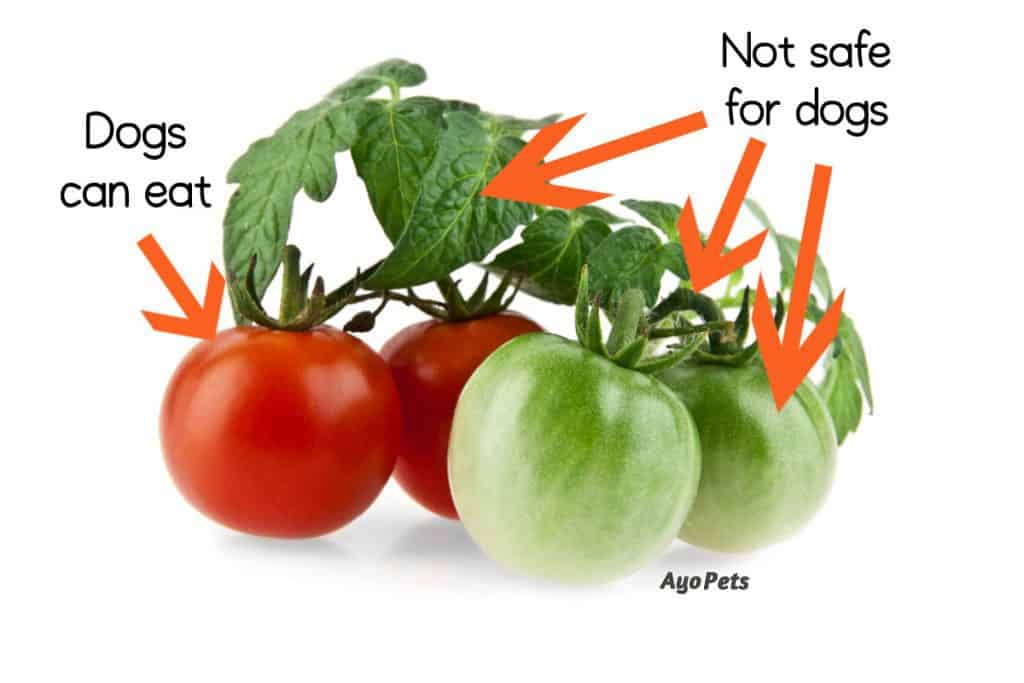
| Turnips | Dogs without thyroid issues can safely eat turnip roots and leaves in small amounts on occasion. Wash the leaves, steam lightly and chop before feeding a dog. Dogs can eat raw turnips chopped into bite-sized pieces, or cooked turnips that are mashed and mixed into food. Never add any seasoning when cooking turnips for dogs. Turnips are high in fiber and eating too much may upset a dog’s stomach. |
| Yams / Sweet Potatoes | Dogs can safely eat cooked yams in small amounts – start with 2 or 3 teaspoons and watch how your dog reacts. Peel the yams to make them easier to digest, and don’t add any seasoning. Steam, bake, or boil the yams before mashing and adding them to your dog’s meal. Large pieces of raw yam can get stuck in the digestive tract or upset a dog’s stomach, so be sure to always feed cooked yams or sweet potatoes. |





